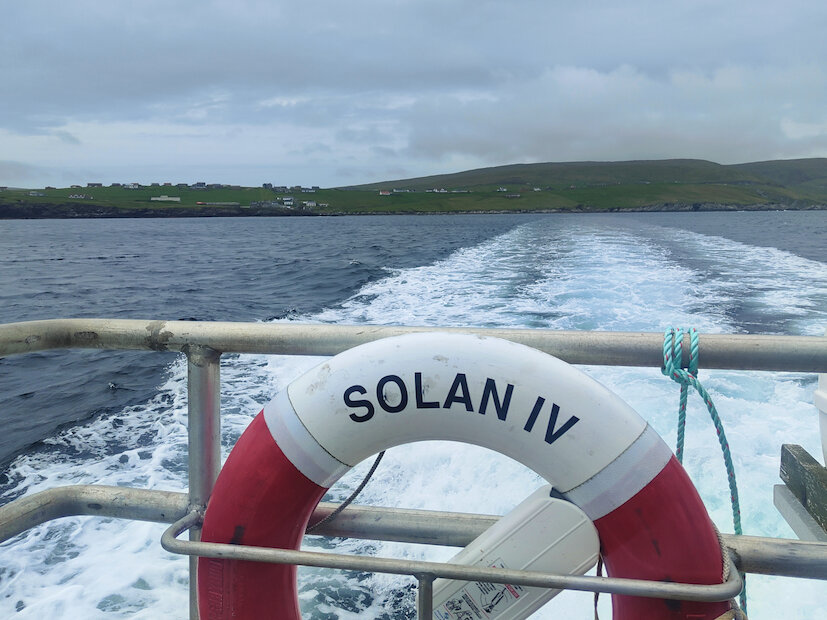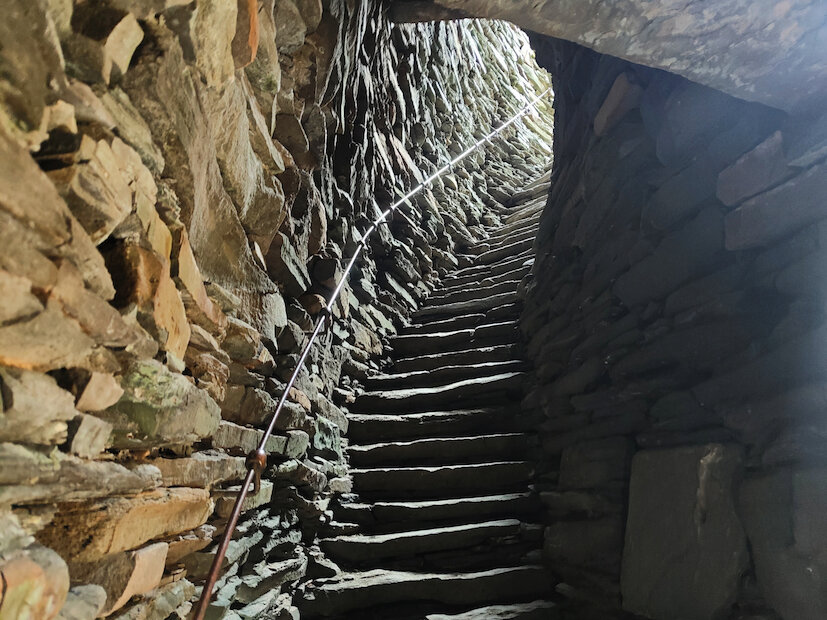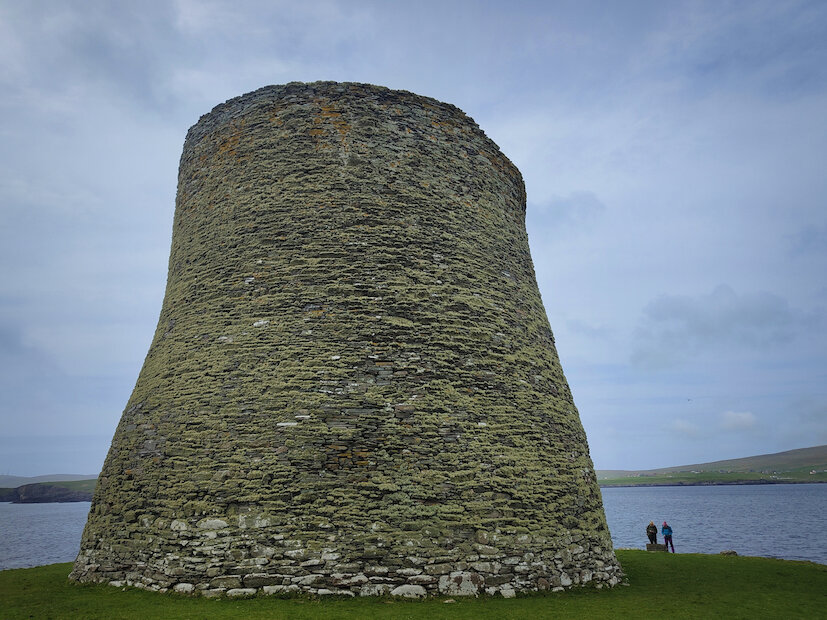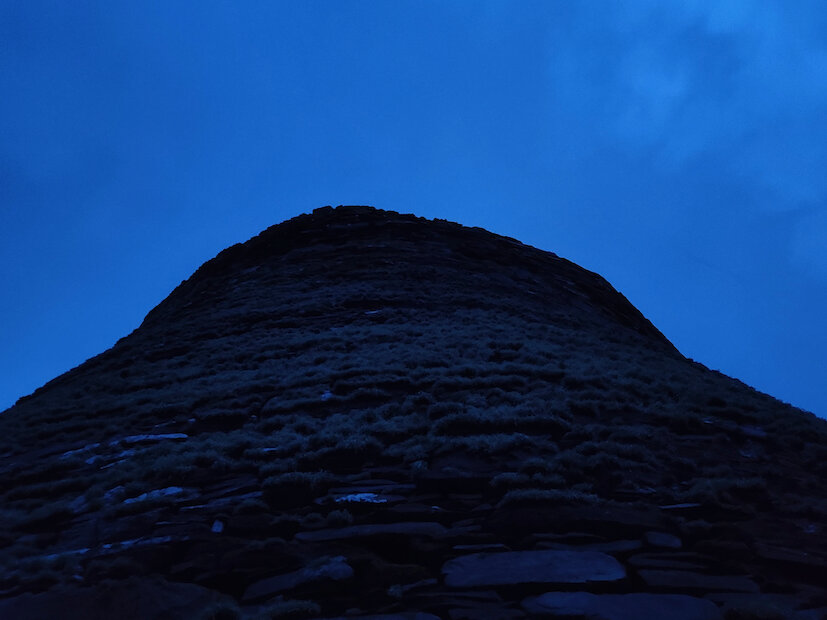It was 10.30 pm when we stepped aboard the small boat to Mousa. The sea around the harbour was almost completely still, its glass-like surface a window to the underwater world, details of rock and seaweed still clearly visible despite the lateness of the hour.
Haar clung to the edges, bringing the horizon closer and obscuring the divisions between land and sea.
I was going to the island of Mousa with my son Rohan. I have made this trip several times, for me it is one of Shetland’s most memorable experiences, but this was Rohan’s first time.





